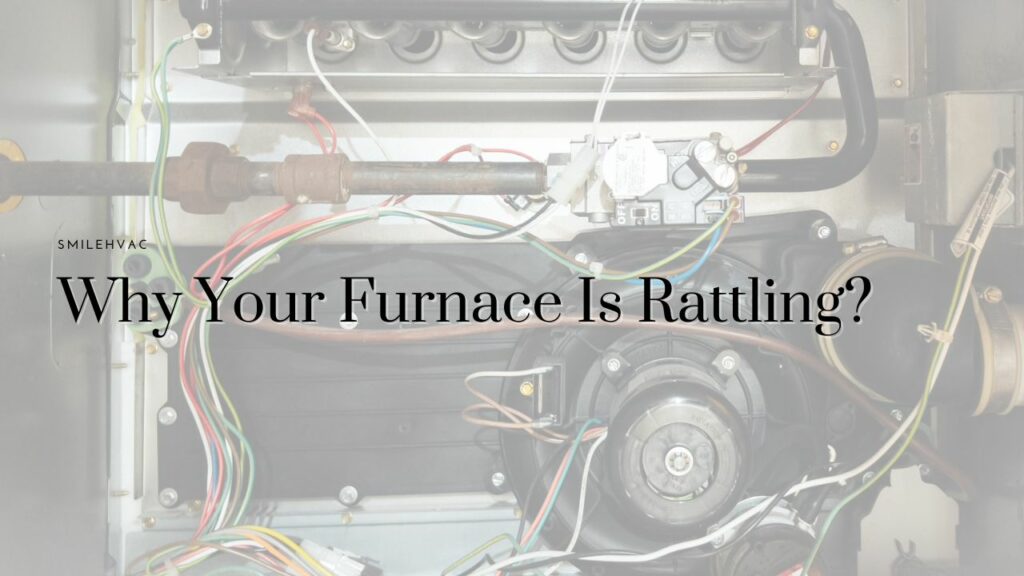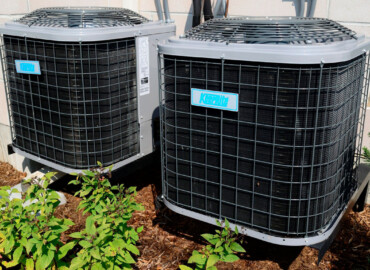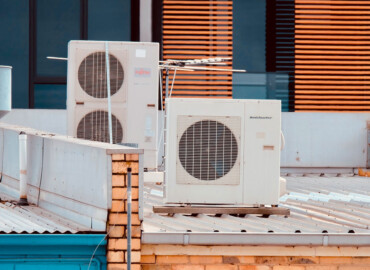Why Is My Furnace Making a Rattling Sound?
Feeling easy-breezy that your furnace is causing mild noise when running? Wait, are you sure it’s not banging or vibrating something inside? Yes, we are talking about the most common furnace problem called rattle or rumbling.
Homeowners who have used a furnace for a long time have at least occasionally noticed all those humming sounds from the furnace if opting for a gas furnace.
Why is your furnace making that rattling sound?
Ductwork issues, broken heat exchangers, loose parts, unclean air filters, clogged burners, and technical faults are some of the notable reasons for furnace rattling. In severe cases, the presence of a rattling echo may serve as an indication of potential carbon monoxide leaks.
But gone are the days when you had to deal with a rattling problem for a long time until a technician arrived. Thankfully, modern furnaces operate mostly in an extraordinary manner, which is a mild whiff of everyday life. But, if the noise has become intolerable and louder than ever, it’s an early sign that the furnace calls for repair from an HVAC specialist.
When it comes to facing problems related to home furnaces, feel free to contact Smile HVAC and discuss it. The sooner the problem is resolved, the less you spend on costly repairs in the future, and the less the security concern.
What does rattling noises coming from your furnace means?
The furnace causing a loud rattling sound can be a sign that serious problems are on the way. The severity and frequency of these issues can vary depending on when your system makes these noises and for how long. If you’ve noticed that it’s making a noise when it turns on, it could be a sign that the heat exchanger part of the furnace is damaged.
Due to this, carbon monoxide can diffuse into your living space, increasing the potential risks to your health. Most rumbling noises are usually caused by loose ducts within the furnace when the unit is about to start. But if the system produces noise mostly when it’s been on for a while, the problem may lie somewhere else.
Various types of furnace Rattles
As we discussed at the beginning of this guide, a variety of factors can promote furnace screeching. However, a rattling noise coming from a furnace is common and can be resolved by having it diagnosed by a repair technician. The most common type of rattling sound can be caused by worn or loose parts.
This rattle appears when the furnace is in its working condition or sometimes even when it is off. If the clicking sound is coming from your system, the reasons could be many. For example, furnace repair from an HVAC specialist is required if the ignition system is not working adequately. However, a malfunctioning ignition system can be the real culprit behind the furnace rattle. Learn more about other rattle echoes with Smile HVAC; we are here to assist you anytime.
Top Reasons Why Your Furnace Makes Rattle Noises
Consider rattling as a warning indication that your furnace is screaming for repairs. If you want to do it by yourself, first figure out the reasons behind it. Later, make sure you’re following the right steps to prevent or treat your rattling furnace. Here, we’ve listed down some of the common reasons that can make furnaces noisy:
1. Problems with Blower Wheel
One of the essential components of the furnace, the blower wheel allows the blower motor to spread warm air within your home. A loose wheel can rub against the side of its housing, causing a rattle. Another reason for the rattling sound could be another piece of your unit getting caught in the blower wheel.
Damage to the blower wheel or motor belt can sometimes cause rattling. Replacement and repair by an experienced is the only solution left to address this type of damage. Contact the Smile HVAC team to get the job done safely and quickly.
2. Damaged Heat Exchanger
The heat exchanger of a furnace plays an important role when it comes to naturally capturing and releasing the gases produced during the combustion process. Since this component deals with a lot of heat, it tends to get damaged over time and use.
A damaged heat exchanger is a potential risk because it can release a harmful, odorless, colorless gas called carbon monoxide. This type of gas can make you feel sick or even harm you in large amounts.
Cracks in this component may cause a rattling noise before the blower starts. To replace the damaged heat exchanger, you must pay approximately $1500 to $2000. However, the cost will vary based on a particular model. If your old heat exchanger has completed 15 years or more, it’s time to install a new furnace instead of repairing the heat exchanger.
With periodic professional checks and inspections, it is easier to spot problems, including a damaged heat exchanger, before they become more significant. And to make the furnace last longer and work more efficiently, homeowners are advised to perform frequent maintenance.
3. Loose components
Typically, as time passes and the furnace gets older, the various components become looser. This can be caused by vibration, continuous use, and temperature changes. As bolts, brackets, or screws become loose, they begin to make a rattling noise when the furnace is on. Besides being obnoxious and annoying, these noises adversely affect your furnace’s performance.
Screws can cause a lot of problems due to their small size, which is difficult to detect. In any case, vital parts may be damaged if they get caught in any other part of the furnace machinery. So, while carrying out repairs, ask your technician to ensure that all bolts stay firmly in place.
4. Air filters full of dust and debris
Pollen, dust, and pet hair accumulation can lead the furnace to work harder, causing rattling and vibrations. Clean filters periodically or should be replaced if needed.
5. Issues with ductwork
A loose ductwork connection may cause rattling issues when the blower works. This could be occurred by ducts that are scratching against each other. By simply sealing loose parts, it is easy to resolve this issue.
However, it is probably hard to reach ductwork; in that case, you’re advised to call a professional technician, like Smile HVAC. Our experts are perfect to handle the task, as well as quickly locate where the loud noise is coming from. Also, they take significant steps to fix it.
6. Panel Covers
The panel cover makes a rattling sound means something needs to be tightened and fixed. A screwed or loose cover can cause annoying noises but won’t affect your furnace’s performance.
7. Furnace lifespan
No matter how well-performed your furnace is, it has a limited lifespan. Over time, it can tend to wear and tear while start causing unusual noises.
8. Issues with Gas Valve or Ignition
Problems associated with gas valves or ignition components can cause irregular combustion, banging, or rattling sounds.
A step-by-step guide on how to fix a rattling furnace!
Fixing a rattling furnace can be a difficult task because it involves finding the rattle location and treating the specific cause of the noise. Even if you’re confident dealing with furnace issues, be aware of the potential risks, and don’t forget to check the user’s manual. But if you’re not confident in DIY repairs, seek help and assistance from a well-trained HVAC expert.
Now, take a look at the steps below to fix a rattling furnace:
Step 1. Safety Measure
Before stepping ahead to the DIY furnace rattling repair task, make sure the furnace is turned off to the furnace at the power panel or the circuit breaker. Meanwhile, don’t forget to check the gas supply to the unit is also shut down.
Step 2. Look for bolts and loose panels
In this step, you’ll need to find if there are any loose panels and bolts. To find them, check the furnace’s exterior panels and front doors for any fasteners. Fasten them in place with the help of a suitable wrench or screwdriver.
Step 3. Keep the blower fan and other parts clean
Afterward, clean the blower fan cover and other parts initially, making sure to remove them thoroughly if there is any blockage or dust accumulation. Also, keep the blades and surrounding components clean. To do this, use compressed air or a soft brush.
Step 4. Adjust the blower fan
If the blower fan is not firmly in place, use a fan balance kit to stop rattling and vibration. Ask for professional assistance from Smile HVAC to make adjustments accordingly.
Step 5. Inspect the ductwork
Make sure the ductwork is not having any disconnected or loose parts. If so, sealing through duct tape is necessary to fix any loose joints. But, the case is quite different, like if a leak is found, you are advised to call an HVAC specialist to fix it as soon as possible.
Step 6. Look for cracks and damage in Heat Exchanger
If any signs of damage or cracks are observed in the heat exchanger, it will certainly start to make a rattling noise as the metal contracts and expands. In that case, turn off the furnace as soon as possible and do not attempt the repair and inspection yourself, instead, call an HVAC technician.
Step 7. Place foam, rubber, or anti-vibration pad
By placing any one of these objects, you will be able to eliminate noise diffusion to the nearby structure into the furnace.
Step 8. Final inspection
After following all the steps below, please turn off the furnace and inspect it. Finally, turn on the power and gas supply, and see if the rumbling problem caused by the furnace is resolved.
Bottom line
Since there are many reasons behind strange noises coming from the furnace, you should consult an HVAC technician to diagnose the exact problem other than loose screws. It is better to call Smile HVAC to diagnose the rattle problem, as our experts work with utmost safety without damaging any components.




